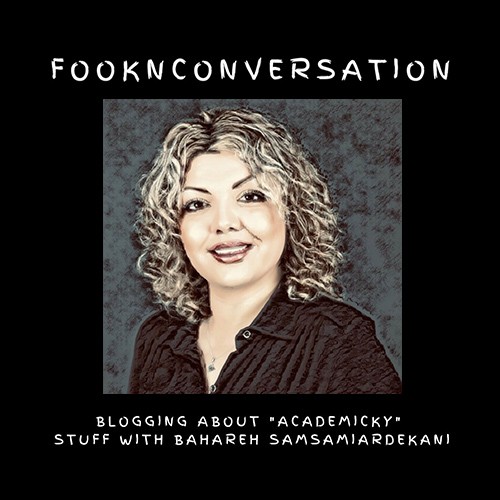
A blog by Bahareh Samsamiardekani.
Canada’s first nursing school opened in 1874 in Ontario. The first baccalaureate nursing programs began in 1919 at the university of British Columbia. Black students were not permitted to attend nursing programs until 1984 (Jefferies, 2020). In the contemporary era, although racism is neglected in nursing curricula, black nursing students still largely experience racialism and discrimination in both the classroom and clinical practice. Nursing education has been challenged to modify organizational structures of white privilege and supremacy and directing and including antiracist training in nursing curriculum. Additionally, nurse educators and faculty members face challenges including antiracist training and antiracist educational materials while developing course material and curricula. According to Markey and Tilki (2007) students of color experience difficulties in both the classroom and clinical practices. In this perspective, Shah (2018) explains “knowledge about cultural differences in beliefs, norms and values is important to honour different ways of knowing and to prevent deficit thinking” (p. 9). As a foreign nurse (with 7 years emergency room experience) in Canada who is considered as a ‘non-white’ student, did I experience any difficulties in the nursing education and clinical practices? Over my career, I remember being told the following:
- I want a white nurse in my room (patient);
- Do you know your job, where did you learn nursing? (patient’s family members);
- If you want to work at the hospital you need to work on your accent! (clinical instructor);
- You cannot be a good nurse if you don’t learn how deal with British and French-Canadian people. (nursing educator);
- I’m not sure you will be able to pass Canadian exams. (educator);
- You think you can be a good nurse in Canada? (peers); and
- Our patients are sensitive therefore we prefer to hire nurse who doesn’t have an accent and…. (workplace interview).
In nursing education, inequality, ethnicity and racialism can have a negative impact on being a nurse student. It can also create a negative influence on students’ learning experiences in the educational setting. For instance, Young-Brice et al. (2018) note, “black students described having to work harder than White peers, feeling unequal, encountering discrimination, feeling pressure to succeed, feeling isolated, and trying to fit in” (p. 160). Therefore, there is a need to create and develop curriculum which seeks improve our pedagogical approaches for addressing antiblack racisms within nursing education and the profession of nursing. Moreover, as Aoki (1983) suggests, “when we better understand and appreciate worldviews, we can better understand what it means to move into the cracks and see curriculum as a living entity” (p. 326). I left nursing not because I’m weak or a sensitive person, but rather decided to continue my education in adult education and health professions education. I plan to become a ‘non-white’ educator/program assessor that challenges the existing discriminations and racism in nursing education and as part of our professional standards of practice.
Like Shah (2018), my current studies, seek to “focus on historically marginalized groups who are underrepresented and underserved in schools (p. 3). My lived experiences afforded me a different curricular lens that recognizes and identifies various actions, behaviours and attitudes which may be racist. As an educator and a program evaluator then, I committed to a nursing education and its respective curriculum-as-planned, -implemented, and -lived that seeks to serve health justice and equity. Even though I cannot take on this curricular revolution in nursing education alone, questioning my nursing pedagogy afford me curricular opportunities to reconceptualize nursing education curriculum as a racialized text. Part of such reconceptualizations, seek to create and sustain a “trusting and caring relationships,” which in turn “must center the needs of marginalized and racialized” students (nurses and patients)” (Shah, 2018, p. 19). How might nursing educators and curriculum developers become implicated in this call for change within nursing education. Nursing educators are in positions to begin addressing the inequality and challenging oppressive systems by starting to make changes in the ways in which they organize their classrooms, curriculum, and relations with nursing education students.
Here Shah (2019) states, as educators “we must continue to develop our critical consciousness through ongoing dialogue that problematizes injustice and mobilizes social action aimed at changing unjust systemic practices” (p. 61). I’m motivated to challenge, not just because of my life experiences, but because of my fear of doing nothing. I believe we must do more to address anti-black racisms within nursing education and our wider profession in relation to the patients we seek to serve. I’m inspired by Markey and Tilki (2007) who have developed activities such as, but not limited to discourse, cultural scenarios, storytelling, sharing experience and information in order to break down obstacles and explore sensitive issues including discrimination, racism, stereotyping and cultivating.
Hence, faculty members, nurse educators and clinical instructors need to enhance their awareness of anti-black racism and its psychological and physiological effect in the educational and clinical setting. Having conversations about racism is challenging which require to be adequately prepared to address and discuss thought provoking dialogue in classrooms and clinical sites. Supporting students to increase their understanding about their defensive reactions towards other race, ethnic and culture may help to improve in racial open-mindedness.
To do so, it is necessary to make adjustments in nursing curriculum and integrate topics about racial inequality and diversity in the curricula activities. Including compulsory course regarding race, minority and non-dominant culture’s topics and using traumatic history lecture of racism in past and present are necessary in nursing education. Nevertheless, discussion alone is not enough, active engagement is way more powerful to get into root of the matter. Also engaging questions should always be asked, such as why. In addition, designing active learning strategies such as role playing, simulation, case-based study and virtual reality training platform lead all students in experiencing and discussing race issues. As a result, practicing active learning in a safe and respectful environment provide students and educators the opportunities to raise awareness of variety of racism actions (verbal and non-verbal) in health professions education.
References:
Aoki, T. T. (1983). Experiencing Ethnicity as a Japanese Canadian Teacher: Reflections on a Personal Curriculum. Curriculum Inquiry, 13(3), pp. 321-335.
Jefferies, K. (2020, May 11). Recognizing history of Black nurses a first step to addressing racism and discrimination in nursing. The Conversation. https://theconversation.com/recognizing-history-of-black-nurses-a-first-step-to-addressing-racism-and-discrimination-in-nursing-125538
Markey, K., and Tilki, M. (2015). Racism in nursing education: a reflective journey. British Journal of Nursing. Vil. 16(7), 390-393. https://researchgate.net/publication/
Shah, V. (2019). Calling in the Self: Centering Socially Engaged Buddhism in Critical Pedagogy Through Personal Narrative. International Journal of Critical Pedagogy, 10(2), 2019.
Shah, V. (2018). Leadership for Social Justice through the Lens of Self- Identified, Racially and Other-Privileged Leaders. Journal of Global Citizenship and Equity Education.6(1), pp. 1-41.
Young-Brice, A., Thomas, D., and Buseh, A. (2018). Being Invisible: Stereotype Threat in an Undergraduate Nursing Program. Journal of Nursing Education. Vol. 57(3). https://researchgate.net/publication/

